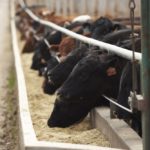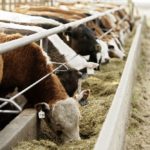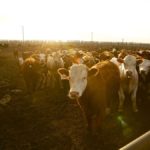Western Canadian yearling prices traded $3 to as much as $8 above week-ago levels while calves were steady to $2 higher. Alberta packers were buying fed cattle in the range of $140-$143, unchanged from week-ago levels; however, a fortuitous $5 bounce in the U.S. fed cattle market bolstered buying enthusiasm for replacements. Feeder cattle futures […] Read more

Klassen: Weaker corn, barley prices support feeder market

Feeder red ink will affect fall calf market
Market Update: Consumer spending to slow while beef production increases
Alberta fed cattle prices were hovering in the range of $153 to $155 in mid-May as the market moved through a period of seasonal strong demand. U.S. cattle-on-feed inventories continue to run five to seven per cent above year-ago levels. Larger market-ready supplies have caused the U.S. weekly slaughter pace during May to average about […] Read more

Klassen: Feeder market stabilizes on lower supplies
Compared to last week, western Canadian feeder cattle prices were unchanged to $2 higher on average. Feeder cattle markets appear to have divorced from the fed cattle complex and calves are now reaching levels not seen since November last year. Feedlot operators were fairly aggressive on all weight categories under 900 lbs., but heavier yearlings […] Read more

Klassen: Feeder market undergoes minor recovery
Compared to last week, western Canadian yearlings sold $3 to as much as $6 higher while calf markets were relatively unchanged. Feeder cattle futures experienced a $5-$7 rally, which quickly renewed optimism in the cash trade. Ideas that yearling supplies will drop below year-ago levels on both sides of the border this August spurred on […] Read more

Cattle market absorbing larger supplies
Market Update: Beef consumption increasing after early-spring snowstorms
Alberta packers were buying fed cattle in the range of $263 to $265 per hundredweight on a dressed basis in late April while live sales were reported from $157 to $169. The market appears to have stabilized after a softer tone earlier in spring. Analysts are expecting second-quarter beef production to come in sharply higher […] Read more

Klassen: Fed cattle market drops, feeder market follows
Compared to last week, western Canadian yearling prices were trading $3-$5 lower; markets for calves and feeders fit for grass were unchanged to $3 lower. Alberta packers were buying fed cattle at $242 on a dressed basis, down $20-$28 from seven days earlier. The sharp drop in the fed cattle market caused feedlot operators to […] Read more

Klassen: Feeder market faces many headwinds
Compared to last week, western Canadian feeder cattle prices were relatively unchanged. Feedlot operators and order buyers were contending with a number of variables which resulted in a defensive tone. First, the Canadian dollar rallied late in the week, derailing any buying interest from south of the border. U.S. feeder cattle markets were also trading […] Read more

Klassen: Seasonable temperatures enhance feeder market
Western Canadian yearling markets were actively trading $2-$5 above week-ago levels while prices in the Lethbridge area were up a solid $5 to as much as $10 in some cases. Improving pen conditions, along with a stronger fed cattle market, resulted in a surge of buying interest from southern Alberta operations. Orders from Feedlot Alley […] Read more

Klassen: Export, feedlot demand drives feeders higher
Compared to last week, western Canadian yearling prices traded $2-$4 higher while calves and lighter-weight feeders were relatively unchanged. Alberta packers were buying fed cattle on a dressed basis from $270 to $272, up $5-$7 from week-ago levels. This firmer tone in the fed market quickly spilled over into prices for shorter-term replacements. There is […] Read more

Looking at the feed grain component
Risk Management Part 5: More feeder cattle equals more feedlot placements, equals larger beef production
With this final article for the series on risk management for cow-calf producers, I note the previous columns discussed a specific aspect of the cash and futures market relationships. Producers are aware of when basis and futures levels are favourable and can use this information for buying price insurance or placing hedges on the feeder […] Read more


